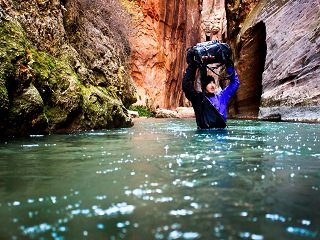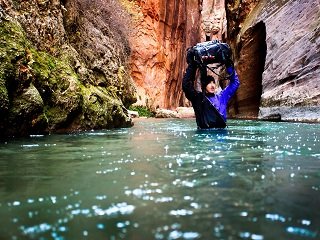 Preparation is one of the most important elements of venturing into the outdoors, especially in the backcountry. However, we’ll never be able to fully prepare for the sometimes merciless weather and the effects it can have on the surrounding environment. One example of this is rising water, or flash floods, which can occur without notice, trap hikers, or even kill. Today, I’ve outlined a few tips to help you should you find yourself facing rising waters.
Preparation is one of the most important elements of venturing into the outdoors, especially in the backcountry. However, we’ll never be able to fully prepare for the sometimes merciless weather and the effects it can have on the surrounding environment. One example of this is rising water, or flash floods, which can occur without notice, trap hikers, or even kill. Today, I’ve outlined a few tips to help you should you find yourself facing rising waters.
One of the first mistakes that hikers make that can find them stuck in rising waters is failing to monitor the weather forecast for the area in which they’ll be hiking. However, lingering rain from sudden heavy rain or slow storm systems that remain in one area for a while can wreak havoc in regions with established creeks or rivers. Water levels can rise swiftly and relentlessly—sometimes over 20 feet—and turn once crossable streams into raging barriers. Be sure to keep an eye on the weather and remember that sometimes postponing or cancelling a trip so a storm can pass through is the smartest idea.
More often than not, the next mistake hikers make is trying to navigate through the surrounding brush to find a way around rising waters. While this can seem like a good idea, and sometimes it can actually lead to safety if you know the area, but often it results in hikers becoming lost or trapped by the region’s geography, which leaves them where they started; facing the river. Because rivers can actually continue to rise up to 24 hours after the rain stops, it’s best to forego bushwacking and find a safe place to wait it out.
When crossing a river, it’s best to wear shoes, unbuckle your pack (so you can easily ditch it if you become swept up), angle your trajectory downstream, and always try to cross with a partner or partners. Two people can safely cross by linking arms and standing side-by-side, with the stronger of the two in front. Each person should use a sturdy pole for balance and make their way across by shuffling sideways while facing upstream and leaning slightly into the current. If crossing with three people, form a triangle with each person’s arms on the others’ shoulders. The tallest of the three should stand upstream from the other two and together, shuffle little by little, one at a time.
As a rule, rivers over knee-high shouldn’t be crossed. You can find the depth with a walking stick or trekking pole. If a given point is too deep or too strong, scout the river for a safer crossing. Wide shallows or braided areas are safe locations, while bends and narrow channels are bad news.
Water is one of those funny aspects of nature. Too little or too much can kill us and it can be as soothing as rain or as destructive as a flood. Rain can cause rising waters and leave hikers in a sticky situation. Hopefully, the aforementioned tips will help you to be better prepared when you’re up against a flash flood, and thus, a more well-rounded hiker.








